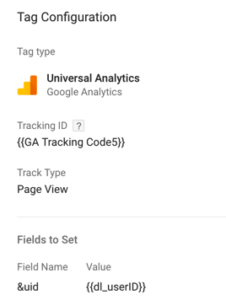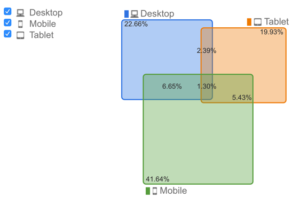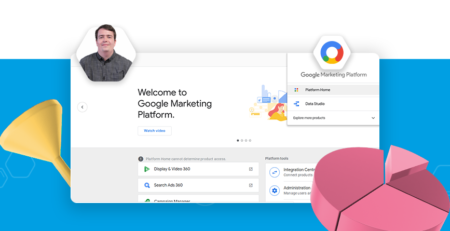Understanding A Cross-Device World
Amongst digital marketers, it is probably common knowledge, but “UserID” as a term is often used as shorthand in analytics for “the process of stitching together user interactions through logged-in status across multiple platforms”. There may be other variants and slight discrepancies, but the premise is to track users across devices (and potentially platforms, more of that later) to inform marketing, product and tech functions within an organisation. The caveat to UserID is its syntax requirements. It requires a login/consistently hashed uniquely identifiable value that is carried across all devices/platforms you wish to track.
Understanding users interactions across devices, outside of a backend database, has always been a question for eCommerce businesses – but that is changing with the user of UserID. User journeys can be collated and segmented to offer a wealth of insight and understanding of different personas and habits. Generating insights that can be transformed directly into actions is made simple; in the shape of re-attributing marketing spend, CRM frequency and brand messaging is possible through connected marketing platforms provides marketers with the ability to push and pull data-driven levers faster than ever before.
There are a number of different ways to implement this – but by far the easiest and most practical is through the use of Google Analytics (GA) or GA360. These platforms offer a straightforward connection to Google Tag Manager (GTM), a small change to the setup of the GA tags in use, and within 15 minutes you can be ready to track. The benefits of this feature in GA360 then become clear – the ability to identify conversion rate by user device paths and the cross-device mix used by your traffic.

Implementing this kind of system is not always so straightforward. There are requirements for a hashed login system. And a consistent array value which can be pushed to Google Analytics across the user journey, for example, this can be seen by the variable for Value in {{curly brackets}} above; if this is not available consistently, a cookie can be set and stitch data together upon login occurring.
There are still difficulties though. Joining users across devices has become less difficult with UserID, but what about platforms? That is still a black box for web analytics. It is possible to do, and with some new features being utilised in GA360 it can even be pushed into a single property, but not with the free version.
It seems that Google have thought about the cross device issue, but failed to recognise the cross-platform issue – particularly between mobile web and mobile app. There are significant numbers of companies utilising native app features in addition to a mobile web app-wrapped payment page due to payment provider restrictions, for example. In this instance, the journey breaks and it becomes a manual process to understand user behaviour.

Other potential uses of UserID functionality include personalised bidding levels – if a user group is identified to be lower value, those IDs can be passed into ad servers, or even paid search tools in the future, and weighted accordingly. Connecting users by UserID from off-site through to on-site and ensuring the experience is consistent has shown in a number of tests to be a very powerful conversion tactic – expect to see this grow.
Ultimately, UserID is one advancement in the charge by vendors, clients and agencies alike to be able to produce a more holistic assessment, and an understanding of exactly how users would like to be able to interact with the brand. This data is rich in behavioural insight, allowing analysts to create models that determine the most efficient marketing models to be following. It is not a complete feature yet, and it is certain that the vendors in the space are looking to provide more comprehensive solutions as marketer’s appetites grow.

Want to learn more about Analytics? Dan Truman hosts a popular Intro and Advanced Analytics course – find out more on our Training page.
This post was originally printed in the Brighton SEO delegate handout.




